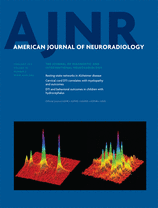
AMERICAN JOURNAL OF NEURORADIOLOGY
Scope & Guideline
Unveiling the Science Behind Neurological Advances
Introduction
Aims and Scopes
- Neuroimaging Techniques and Innovations:
AJNR publishes studies on various neuroimaging modalities, including MRI, CT, PET, and advanced imaging techniques like diffusion tensor imaging and machine learning applications. This focus highlights ongoing innovations and improvements in imaging technology. - Clinical Applications and Outcomes:
Research articles often explore the clinical implications of neuroimaging findings, including their impact on treatment decisions, patient outcomes, and disease management. This aspect underscores the journal's commitment to bridging the gap between imaging and clinical practice. - Neurovascular Imaging and Interventions:
The journal frequently covers topics related to neurovascular diseases, including stroke, aneurysms, and vascular malformations. This includes both diagnostic imaging and the evaluation of endovascular treatments, reflecting the journal's role in advancing interventional neuroradiology. - Radiogenomics and Biomarkers:
AJNR features research that examines the interplay between imaging findings and genetic, histological, or molecular characteristics of neurological diseases, particularly gliomas and other tumors. This focus on radiogenomics aims to enhance personalized medicine in neuroradiology. - Education and Training in Neuroradiology:
The journal also addresses the educational aspects of neuroradiology, providing resources and insights for training radiologists and enhancing the overall quality of care in the field.
Trending and Emerging
- Artificial Intelligence in Imaging:
There is a growing body of research focused on the application of artificial intelligence and machine learning in neuroradiology. This includes automated detection systems, predictive modeling, and enhancements in imaging protocols, indicating a significant trend towards integrating technology into clinical workflows. - Patient-Centered Outcomes and Quality of Care:
Recent publications show an increasing emphasis on studies that assess patient outcomes, quality of life, and the impact of imaging on treatment decisions. This trend aligns with a broader movement in healthcare that prioritizes patient-centered approaches. - Advanced Imaging Biomarkers:
The journal is increasingly focusing on studies that explore advanced imaging biomarkers, particularly in the context of neurological disorders like Alzheimer's disease and multiple sclerosis. This reflects a trend towards personalized medicine and improved diagnostic accuracy. - Neurointerventional Techniques:
Research on neurointerventional procedures, including endovascular treatments for stroke and aneurysms, is on the rise. This indicates a growing interest in minimally invasive techniques and their imaging-guided applications. - Multimodal Imaging Approaches:
There is a noticeable trend towards studies that utilize multimodal imaging techniques, combining different imaging modalities to provide a comprehensive assessment of neurological conditions. This approach enhances diagnostic capabilities and treatment planning.
Declining or Waning
- Traditional Imaging Techniques:
There is a noticeable shift away from studies solely focused on traditional imaging techniques, such as basic CT and conventional MRI, as the field increasingly embraces advanced imaging modalities and quantitative analyses. - Non-Interventional Studies:
The journal has seen fewer publications centered on purely observational studies without interventional aspects. There is a growing trend toward research that combines imaging with therapeutic interventions or advanced analytics. - Generalized Neurological Conditions:
Papers discussing broadly defined neurological conditions without specific imaging or treatment innovations are becoming less common. The focus has shifted towards more specific conditions and the application of tailored imaging techniques. - Basic Research Without Clinical Relevance:
While basic science and imaging research remain important, there is a trend towards prioritizing studies that have direct clinical implications or can influence patient care decisions, leading to fewer purely theoretical studies. - Narrowly Defined Patient Populations:
Research limited to niche patient populations or rare conditions has decreased, as there is a stronger emphasis on studies that have broader applicability across various demographics and conditions.
Similar Journals

Current Radiology Reports
Exploring the latest breakthroughs in diagnostic imaging.Current Radiology Reports is an esteemed journal published by SPRINGERNATURE, focusing on the dynamic field of radiology, nuclear medicine, and imaging. With a commitment to advancing knowledge and promoting innovative practices, this journal serves as a valuable resource for researchers, healthcare professionals, and students striving to stay at the forefront of radiological advancements. Featuring an impressive impact factor and recognized as a Q3 journal within its category as of 2023, it highlights critical developments and comprehensive reviews that inform clinical practice and research methodologies. Although it operates under a subscription model, the journal provides a rich repository of peer-reviewed content, covering a wide range of topics from diagnostic imaging to therapeutic applications. With a publication span from 2013 to 2024, Current Radiology Reports continues to uphold its reputation as a leading publication critical for anyone involved in the radiology profession.
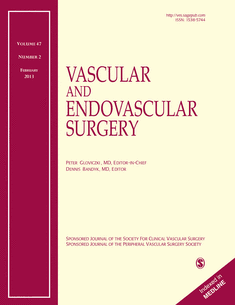
Vascular and Endovascular Surgery
Exploring the Future of Endovascular SurgeryVascular and Endovascular Surgery is a distinguished peer-reviewed journal dedicated to the advancements and innovations in the field of vascular and endovascular medicine. Published by SAGE Publications Inc, this journal serves as a vital platform for clinicians, researchers, and students keen to explore cutting-edge practices, surgical techniques, and emerging therapies within cardiovascular medicine. With an ISSN of 1538-5744 and an E-ISSN of 1938-9116, it has established a solid reputation since its inception, covering articles from its founding years in 1967 to its continuous releases up to 2024. The journal currently holds a Q3 quartile ranking in the categories of Cardiology and Cardiovascular Medicine and Surgery, highlighting its significance within the academic community. Although it is not an open-access journal, it offers valuable content that supports evidence-based practice and clinical decisions in vascular and endovascular procedures. By embracing multidisciplinary collaboration and fostering innovation, Vascular and Endovascular Surgery remains a critical resource for those invested in enhancing patient outcomes and advancing surgical methodologies.

Clinical Neuroradiology
Transforming Clinical Practice through Cutting-edge Imaging.Clinical Neuroradiology, published by SPRINGER HEIDELBERG, is a leading journal in the fields of neurology and radiology, focusing on the intersection of clinical practice and cutting-edge imaging technologies. With an impressive impact factor and categorized within Q2 in Neurology (clinical) and Q1 in Radiology, Nuclear Medicine and Imaging, this journal is positioned at the forefront of scientific discourse, facilitating high-quality research dissemination from its origins in 2000 through to 2024. Situated in Germany, Clinical Neuroradiology provides a platform for researchers, professionals, and students to explore the latest advancements and insights in neuroimaging, ensuring that its readership remains at the vanguard of clinical practice. While it does not offer open access, the journal remains committed to fostering a vibrant academic community dedicated to enhancing patient care through innovative neuroradiological techniques and findings.
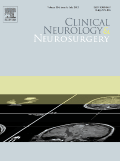
CLINICAL NEUROLOGY AND NEUROSURGERY
Pioneering Research in Neurology and SurgeryCLINICAL NEUROLOGY AND NEUROSURGERY, published by Elsevier, is a pivotal journal in the fields of neurology and neurosurgery, recognized for its rigorous peer-review process and commitment to advancing clinical practices. Established in 1974, the journal has become a respected source of innovative research, evidenced by its excellent Scopus rankings—placing it within the top half of journals in both Medicine (Surgery) and the clinical aspect of Neurology. Notably, it has achieved a Q2 ranking in both Medicine (miscellaneous) and Surgery, and Q3 in Neurology (clinical) as of 2023. The journal publishes a wide array of articles focused on the latest findings, clinical practices, and technological advancements that address neurological disorders and surgical interventions. While it does not currently operate under an open-access model, it remains highly accessible to academic institutions and professionals worldwide from its editorial base in the Netherlands. By enabling knowledge-sharing and fostering collaboration among researchers, practitioners, and students, CLINICAL NEUROLOGY AND NEUROSURGERY plays a crucial role in shaping the future of clinical neurology and surgical techniques.

Iranian Journal of Radiology
Connecting Researchers for a Brighter Imaging FutureWelcome to the Iranian Journal of Radiology, a pivotal platform dedicated to advancing the field of radiology, nuclear medicine, and medical imaging. Published by BRIEFLAND, this journal aims to disseminate high-quality original research, reviews, and clinical studies that contribute substantially to the global scientific community. Established in 2008 and spanning until 2024, the journal provides an essential archive of knowledge in a rapidly evolving discipline. Although it currently holds a Q4 quartile ranking in the 2023 Scopus metrics, it serves as an important resource for both emerging and established researchers looking to submit their work. Located in the Netherlands, the journal is committed to open dialogue and collaboration amongst professionals in the field, reflecting its accessibility and relevance to both practitioners and academics. With its continued growth and commitment to quality, the Iranian Journal of Radiology is poised to enhance understanding and innovation in diagnostic imaging.

NEURORADIOLOGY
Exploring Innovative Frontiers in Neurology and RadiologyNEURORADIOLOGY, published by SPRINGER, stands as a pivotal journal within the fields of Cardiology and Cardiovascular Medicine, Neurology (clinical), and Radiology, Nuclear Medicine and Imaging. Since its inception in 1970, this esteemed publication has been dedicated to advancing our understanding of neuroimaging and its applications in clinical practice, thereby promoting interdisciplinary collaboration among specialists. With an impressive impact factor and consistently ranked in the upper tiers (Q1 and Q2) across its relevant categories, NEURORADIOLOGY is particularly recognized for its contribution to the science and application of imaging technologies that enhance diagnosis and treatment in neurology and cardiovascular medicine. Researchers and practitioners looking to stay at the forefront of the field will find crucial insights and innovative research within its pages, making it an essential resource for both students and seasoned professionals alike. NEURORADIOLOGY is accessible via subscription, ensuring a comprehensive repository of high-quality research for its diverse readership.

RADIOLOGY
Elevating diagnostic excellence through innovative research.RADIOLOGY, published by the Radiological Society of North America (RSNA), stands as a premier journal in the fields of radiology, nuclear medicine, and imaging. Established in 1945, this esteemed journal has consistently provided groundbreaking research and insights, helping to shape advancements in diagnostic imaging and therapeutic interventions. With a commendable Q1 ranking in its category and a remarkable 99th percentile ranking in Scopus, RADIOLOGY continues to be a pivotal resource for clinicians, researchers, and students alike. Although not an Open Access journal, it offers a wealth of high-quality peer-reviewed articles that contribute significantly to the ongoing discourse in the medical community. With a strong focus on innovative techniques and the integration of new technologies, RADIOLOGY remains essential for professionals aiming to stay at the forefront of medical imaging practices.
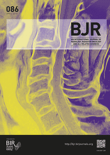
BRITISH JOURNAL OF RADIOLOGY
Pioneering Research for the Future of ImagingBritish Journal of Radiology is a leading peer-reviewed journal published by the British Institute of Radiology, dedicated to advancing the field of radiology, nuclear medicine, and imaging. With a prestigious history dating back to 1945, this journal is at the forefront of disseminating cutting-edge research and innovations that significantly impact clinical practice. Currently enjoying a Q1 ranking in the field of radiology and Q2 in general medicine for 2023, it is recognized for its rigorous standards and high-quality content, ranking #87 out of 333 in Scopus for specialties related to Medicine, Radiology, Nuclear Medicine, and Imaging, placing it in the 74th percentile. Researchers, professionals, and students are encouraged to engage with the latest findings and comprehensive reviews presented within its pages, which contribute not only to academic discourse but also to the evolution of practice in the wider medical community.

Current Medical Imaging
Exploring the Frontiers of Medical ImagingCurrent Medical Imaging is a reputable journal published by Bentham Science Publishers, specializing in the dynamic field of medical imaging, with a strong emphasis on both clinical applications and technological advancements. Established in 2007, the journal has made significant contributions to the fields of Internal Medicine and Radiology, consistently ranking in the Q3 quartile for these categories as of 2023. The journal's ISSN 1573-4056 and E-ISSN 1875-6603 ensure wide accessibility for scholarly communication, although it operates under a traditional access model. With its continuous publication from 2011 to 2024, Current Medical Imaging aims to bridge the gap between advanced imaging techniques and their practical application in patient care, making it indispensable for researchers, healthcare professionals, and students eager to stay at the forefront of innovations in imaging technology and clinical practice.
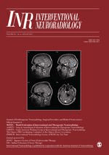
INTERVENTIONAL NEURORADIOLOGY
Pioneering Research in Neuroradiological InterventionsINTERVENTIONAL NEURORADIOLOGY, published by SAGE PUBLICATIONS INC, is a key journal within the interdisciplinary fields of cardiology, neurology, and radiology, focusing on the latest advancements and clinical practices in neuroradiology. With an ISSN of 1591-0199 and an E-ISSN of 2385-2011, this journal has established itself as a vital resource since its inception in 1996, attracting contributions from leading experts worldwide. Currently categorized in the Q2 category for Cardiology and Cardiovascular Medicine and Radiology, and Q3 for Clinical Neurology as of 2023, INTERVENTIONAL NEURORADIOLOGY has gained recognition for its impactful research, reflected in its ranking within the Scopus metrics. Although not an open-access publication, its rigorous peer-reviewed articles provide indispensable knowledge that enhances the practice and understanding of interventional procedures. Researchers, clinicians, and students will find this journal a valuable avenue for insights into the evolving landscape of neuroradiological interventions, ultimately contributing to improved patient outcomes.